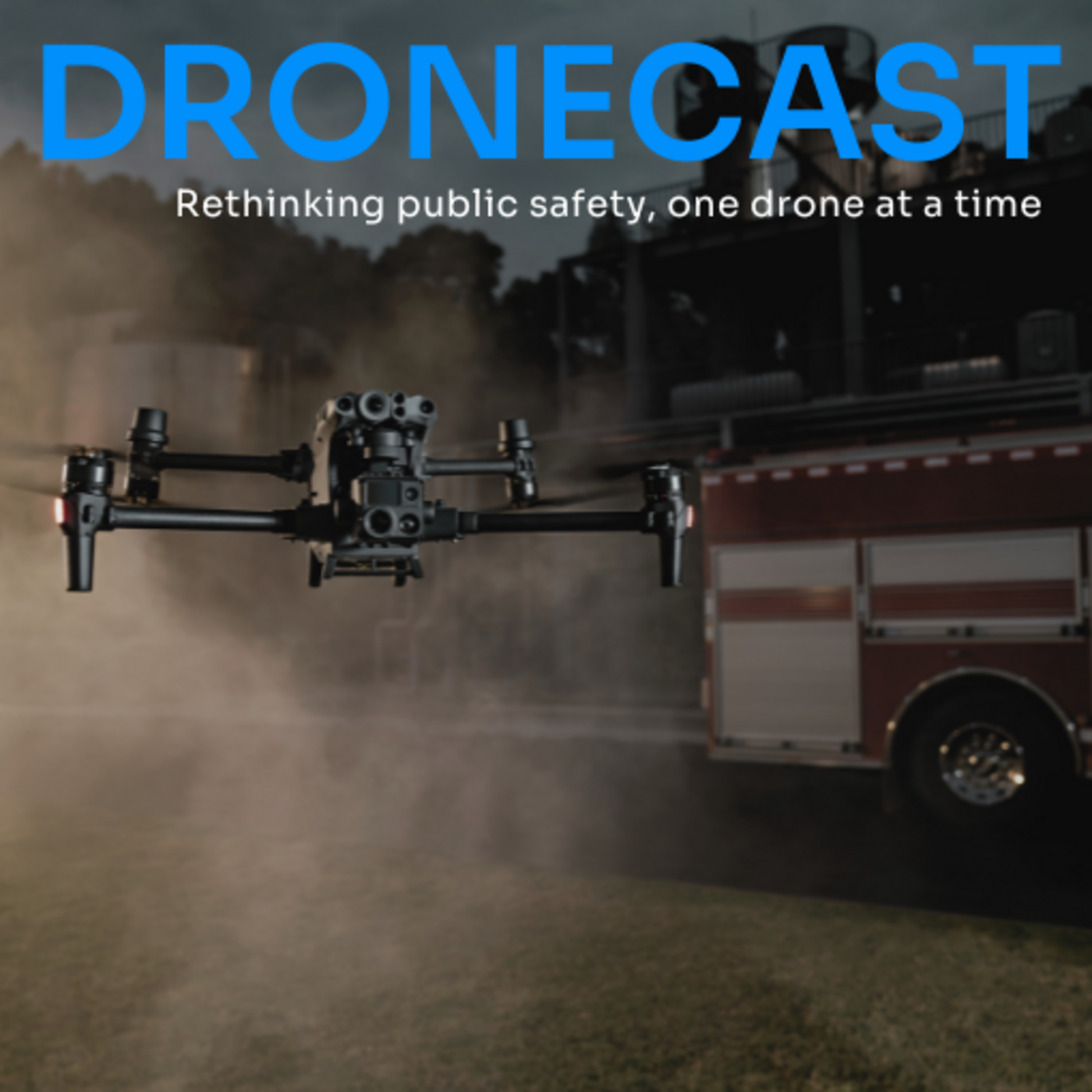Flying Blind: The Untold Story of Public Safety's First Beyond Visual Line of Sight Waiver
August 5, 2025

In this episode of DroneCast, host Joe Kearns sits down with Brandon Karr, co-founder of Unmanned Tactical Group and a trailblazer in UAS operations for public safety. Brandon shares his journey building one of the nation’s first Drone as First Responder (DFR) programs, how he secured the first-ever BVLOS waiver for public safety, and offers actionable insights for agencies looking to launch or expand drone programs.
In this feature-packed episode of DroneCast, host Joe Kearns interviews Brandon Karr, an internationally recognized expert in unmanned aircraft systems (UAS) for public safety. With a background in aviation dating back to 2006 and extensive experience in law enforcement, Brandon served as the chief pilot and UAS integrations coordinator for the Pearland Police Department. He was instrumental in launching one of the nation’s first Drone as First Responder (DFR) programs and successfully secured the first-ever FAA Beyond Visual Line of Sight (BVLOS) waiver for public safety use.
As co-founder of the Unmanned Tactical Group, Brandon has helped over 600 agencies across the United States build and strengthen their drone programs. He is also an active committee member for Drone Responders and the Law Enforcement Drone Association (LEDA) and a frequent speaker at major UAS and public safety conferences.
This episode explores the evolution of DFR programs and the strategies needed to turn them from concept into reality. Brandon offers practical advice on navigating regulatory hurdles, securing funding, building internal support, and leveraging platforms like DroneSense for real-time coordination. He shares how to use data and performance metrics to demonstrate program value to stakeholders and describes how agencies can integrate drones with future technologies like terrestrial robots and submersibles.
Whether you’re launching a new drone initiative or scaling an existing one, this conversation is packed with expert-level guidance to help public safety leaders operationalize drones in ways that improve response times, enhance safety, and create long-term program sustainability.
What You'll Learn:
- How to establish and scale a successful DFR program from concept to implementation
- Why BVLOS authorization is essential and how to secure it
- Funding strategies through grants, cross-agency collaboration, and community buy-in
- How to manage resistance and gain support through education and data-driven success
- Advantages of using the DroneSense platform for situational awareness and coordination
- How networking boosts program growth and resilience
- How detection tech reduces staffing pressure and operational costs
- Future integration with land-based robots, underwater drones, and large-scale aerial platforms
- The importance of continuous training and regulation updates for drone teams
- Using metrics and outcomes to communicate value to decision-makers
Helpful Links:
- Fill out the Audience Form here.
- Explore more episodes and insights on the official DroneCast website: https://www.dronesense.com/dronecast
- Ready to launch or enhance your drone program? Get Started with DroneSense today!
- Parrot, ANAFI UKR Tech Sheet: https://5n8jp.share.hsforms.com/2oWfNvmGLRCeKUWcJGtFbBg
Episode Highlights:
- [00:08:52] The Power of DFR Programs - Brandon Karr explains how Drone as First Responder (DFR) programs enable drones to arrive at emergency scenes within 90 seconds of a 911 call, beating traditional first responders 70% of the time. The system's rapid response allows for real-time situational awareness before ground units arrive, enabling better resource allocation and response planning. DFR capabilities allow departments to disregard unnecessary responses in over 25% of calls, freeing up officers for higher-priority situations. The program uses strategically positioned drones with high-powered cameras to assess situations, determine injury severity, and guide appropriate emergency response levels. Through DFR implementation, departments can significantly reduce response times while enhancing officer and public safety.
- [00:32:25] Strategic Funding for DFR Programs - Karr reveals that successful DFR funding requires breaking down departmental silos and demonstrating value across multiple divisions, including law enforcement, fire, and emergency management. He emphasizes leveraging diverse funding sources, including DOJ grants, FEMA grants, Walmart grants, and community partnerships. The key is understanding that DFR programs benefit multiple stakeholders, from reducing officer exposure to dangerous situations to improving emergency response times. Departments should focus on educating stakeholders about cost savings through reduced liability, faster scene clearance, and more efficient resource deployment. The initial investment in DFR technology typically pays for itself through operational efficiencies and reduced risk exposure.
- [00:43:01] BVLOS Operations Transform Staffing Requirements - Beyond Visual Line of Sight (BVLOS) authorization dramatically reduces the personnel needed to operate DFR programs, cutting staffing requirements from 10 people to just 5 for 24/7 coverage. This efficiency is achieved by eliminating the need for multiple visual observers and allowing a single teleoperator to manage drone operations remotely. The technology enables departments to expand their drone programs without proportionally increasing staff costs. Implementation of BVLOS capabilities helps demonstrate program success through increased flight hours and documented wins. This operational model makes DFR programs more feasible and sustainable for departments of all sizes.
- [00:47:47] Building Success Through Community Networking - Karr emphasizes that networking within the drone community is crucial for program success, highlighting organizations like DRONERESPONDERS and the Law Enforcement Drone Association as valuable resources. He stresses the importance of learning from others' experiences to avoid common pitfalls and accelerate program development. The drone public safety community actively shares knowledge because they understand it directly impacts life-saving capabilities. Attending conferences and joining professional organizations provides access to best practices, emerging technologies, and supportive relationships. This collaborative approach helps agencies build more effective programs while avoiding costly mistakes and delays.
Episode Resources:
- Brandon Karr on LinkedIn
- Joe Kearns on LinkedIn
- Get started with DroneSense
- Parrot, ANAFI UKR Tech Sheet: https://5n8jp.share.hsforms.com/2oWfNvmGLRCeKUWcJGtFbBg
Dronecast: Rethinking Public Safety, One Drone at a Time Podcast is handcrafted by our friends over at: fame.so
Previous Guests include: Matt Rowland, Jason Burnside
Check out our 3 most downloaded episodes:
Previous Guests include: Matt Rowland, Jason Burnside
Check out our 3 most downloaded episodes: